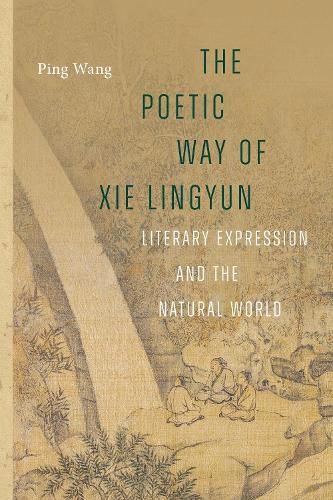Readings Newsletter
Become a Readings Member to make your shopping experience even easier.
Sign in or sign up for free!
You’re not far away from qualifying for FREE standard shipping within Australia
You’ve qualified for FREE standard shipping within Australia
The cart is loading…






The father of Chinese landscape poetry in time and place
During the dark centuries between the fall of the Han dynasty in 220 CE and the golden age of reunified China under the Tang and Song dynasties (618-1279), the shi poetic form embraced new themes and structure. In this meticulously constructed study, Ping Wang traces the social conditions that sparked innovation and marked a significant turn in intellectual history. Using biography, social history, and literary analysis, she demonstrates how the shi form came to dominate classical Chinese poetry, making possible the works of the great poets of later dynasties and influencing literary development in Korea and Japan.
Focusing on the life of poet Xie Lingyun (385-433), she traces the exile of aristocratic families in the wild south, which led to their thematic use of "mountains and water" (shanshui) landscapes over the pastoral ones of earlier writers and artists. Changes in poetic form moved away from genres associated with aggrandizement of the imperial court and, through innovative use of meter and syntax, created a new style of varied, fluid cadence. In Xie's redesigned five-syllable-line poetry, couplets balanced contradictions that the poet used to capture principles of the natural world.
Wang shows how this literary form enabled exiled scholars to make meaning of their tentative existence in the southland, in which the mountains and water imaged the yin-yang principle underlying existence. The post-Han intelligentsia thus used the dilemma of southern exile to craft literature that was revolutionary in both content and form.
$9.00 standard shipping within Australia
FREE standard shipping within Australia for orders over $100.00
Express & International shipping calculated at checkout
The father of Chinese landscape poetry in time and place
During the dark centuries between the fall of the Han dynasty in 220 CE and the golden age of reunified China under the Tang and Song dynasties (618-1279), the shi poetic form embraced new themes and structure. In this meticulously constructed study, Ping Wang traces the social conditions that sparked innovation and marked a significant turn in intellectual history. Using biography, social history, and literary analysis, she demonstrates how the shi form came to dominate classical Chinese poetry, making possible the works of the great poets of later dynasties and influencing literary development in Korea and Japan.
Focusing on the life of poet Xie Lingyun (385-433), she traces the exile of aristocratic families in the wild south, which led to their thematic use of "mountains and water" (shanshui) landscapes over the pastoral ones of earlier writers and artists. Changes in poetic form moved away from genres associated with aggrandizement of the imperial court and, through innovative use of meter and syntax, created a new style of varied, fluid cadence. In Xie's redesigned five-syllable-line poetry, couplets balanced contradictions that the poet used to capture principles of the natural world.
Wang shows how this literary form enabled exiled scholars to make meaning of their tentative existence in the southland, in which the mountains and water imaged the yin-yang principle underlying existence. The post-Han intelligentsia thus used the dilemma of southern exile to craft literature that was revolutionary in both content and form.